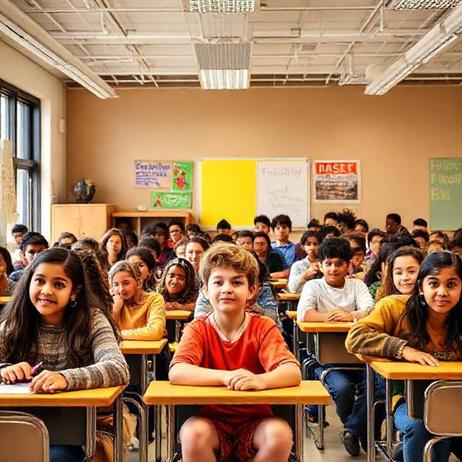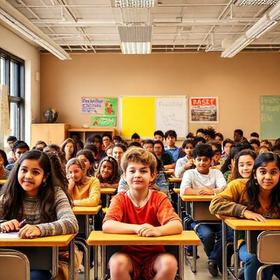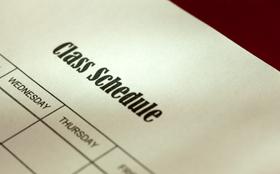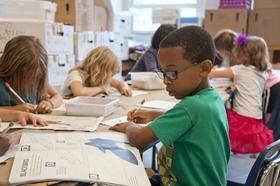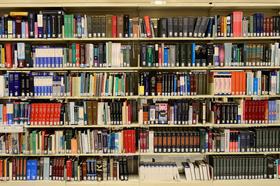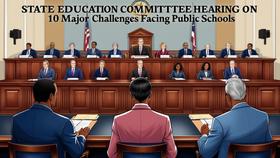U.S. Public vs. Private Schools: 2025 Guide
The choice between public and private schools remains one of the most consequential decisions for American families. As of 2025, the landscape reflects shifting enrollment patterns, evolving school-choice policies, and significant financial trade-offs. This guide examines the latest trends, costs, and considerations to help parents, students, and educators make informed decisions.
1. Enrollment & Demographics
Public schools continue to dominate the U.S. K–12 system. According to the Learning Policy Institute, about 91 percent of students—more than 49 million—attend one of the nation’s 99,000+ public schools. Private schools, by contrast, number around 29,700 and educate approximately 4.7 million students, or under 9 percent of the total. Private schools are primarily clustered in urban and suburban areas: roughly 83 percent are in or near cities, while only 16.6 percent serve remote or rural regions.
Regarding religious affiliation, about two-thirds of private schools—roughly 66 percent—are faith-based, with Catholic schools forming a large share.
2. Tuition, Funding & Spending
Public schools are funded largely through local, state, and federal tax revenues; they do not charge tuition for in-district students. However, public spending per pupil remains substantial: many districts now average around $14,000–$15,000 per student per year, depending on the state and district.
Private school tuition varies significantly. According to PrivateSchoolReview, for the 2025–26 school year, the national average is approximately $14,999 annually, with elementary tuition averaging $14,018 and high school reaching $17,954. Other sources place the average somewhat lower—for example, around $12,790, though this figure reflects wide variation by region and school type. Wooclap
Religious-affiliated private schools (e.g., Catholic) tend to be more affordable, often in the range of $7,000–$9,000 per year.
Independent day schools (nonsectarian) have much higher tuition: the National Association of Independent Schools (NAIS) reports a median of over $32,000, and elite institutions can charge $50,000–$70,000+.
Despite high sticker prices, many private schools offer substantial financial aid. At highly selective institutions, nearly half of students may receive need-based aid, making the net cost significantly lower than the published rate.
3. Policy Trends & School Choice
School choice is surging. In 2025, private school choice program participation jumped by 25 percent, rising from just over 1 million students in 2024 to around 1.3 million.
These programs include vouchers, tax-credit scholarships, and education savings accounts (ESAs). As of 2025, 34 states have some form of private school choice or voucher policy.
From a fiscal perspective, the 2025 Fiscal Factbook by EdChoice shows that even in states with robust choice programs, spending on private-choice remains a very small share of total state expenditures—typically below 1 percent. EdChoice
The scale of these programs and their rapid growth suggest that public funding is gradually being redirected, though supporters argue that these initiatives represent meaningful parental empowerment rather than a drain on public resources.
4. Educational Experience & Outcomes
Class Size and Instruction. Private schools often advertise smaller class sizes and lower student-teacher ratios. Teachers and parents frequently cite a more “intimate environment,” where students receive more individualized attention. Some public schools, especially in high-density districts, face challenges with overcrowding. According to educators, class sizes in some private schools are capped in the low 20s, while public school classes may exceed 30 or 40 students.
Curriculum Flexibility. Private schools typically enjoy more curricular freedom: they can design specialized programs, emphasize religious instruction, or provide advanced college-preparatory courses. Public schools must follow state standards and are subject to greater regulatory oversight.
Equity and Access. Critics of expanding choice argue that voucher programs may exacerbate inequality. Public funding diverted to private schools could undercut already under-resourced public districts, especially in low-income areas.
On the other hand, some parents see vouchers and ESAs as a pathway to mitigating disparities—particularly when public schools in their neighborhoods underperform. As one parent put it, school choice “lets us vote with our feet … and our tax dollars.”
5. Real-World Examples & Expert Insights
At Phillips Academy Andover, a leading independent boarding school, the 2025–26 sticker tuition is around $57,000 for day students and over $73,000 for boarders. Yet, the school covers 100 percent of demonstrated financial need, making it accessible to a wider socioeconomic range than raw cost might suggest.
According to EdChoice CEO Robert Enlow, the 25% one-year growth in participation reflects “a watershed moment in school choice” and the rising demand for alternatives to traditional public schooling. K-12 Dive
Education policy analysts note that while private school choice programs are still a relatively small fraction of total educational spending, their long-term growth could reshape public school funding dynamics, particularly in states like Florida, Arizona, and Ohio where choice participation is dense.
6. Pros & Cons: Public vs Private (2025 Perspective)
Public School Strengths
No tuition for in-district students
Broad accessibility, especially in underserved communities
Established infrastructure and diverse extracurriculars
Accountability through public governance and standardized testing
Public School Challenges
Class sizes may be large
Variation in quality across districts
Funding often tied to local property taxes, creating equity gaps
Private School Strengths
Flexible curriculum and specialized programming
Smaller class sizes and potentially stronger student-teacher relationships
Financial aid opportunities can reduce net cost
Access to a growing number of choice programs
Private School Challenges
High sticker price (tuition can be prohibitive)
Not equally accessible in all geographic areas
Admissions can be selective
Dependence on public choice funds may introduce political risk
7. Making the Decision: Key Considerations for Parents
Estimate the Real Cost. Look beyond the tuition sticker price—understand net cost after financial aid, scholarships, or vouchers.
Visit and Observe. Tour both public and private schools in your area. Ask about class sizes, teacher experience, and extracurricular offerings.
Consider Policy Stability. School choice programs are expanding, but state-level policies may change. Investigate the robustness of funding in your state.
Evaluate Long-Term Goals. Does your child benefit more from the personalized structure of a private school, or from the diversity and resources of a public setting?
Assess Community and Access. Is there a private school nearby? What transportation or geographical barriers could affect enrollment?
8. Looking Forward: Trends to Watch
Expansion of Choice Programs: With the 25% surge in private school choice participation, more policymakers and families may push for expanded voucher and ESA programs.
Funding Equity Debates: As public funds move toward private school programs, debates over educational equity are intensifying. Observers will closely watch how this shift affects underfunded public districts.
Innovation in School Design: Both public and private sectors are experimenting with new models—micro-schools, blended online/in-person learning, and customized zoning based on community input. Recent research even proposes algorithmic school rezoning to optimize equity and efficiency.
Transparency in Aid: Increased demand for private schools may push institutions to be more transparent about their financial aid practices, making net cost more predictable for families.
Conclusion
Choosing between public and private school in 2025 is not only a matter of cost—it involves trade-offs in access, environment, and educational philosophy. Public schools offer broad accessibility and zero tuition, but may face challenges with resource equity. Private schools deliver flexibility, smaller class sizes, and specialized instruction, but often come with high nominal costs.
With 1.3 million students now leveraging private school choice programs, the landscape is shifting: what was once a niche option is becoming mainstream. K-12 Dive+2Private School Review+2
Families making this decision today should weigh both immediate and long-term factors carefully: financial, social, academic, and policy-related. The right choice depends on your child’s needs—and on how you envision their educational journey.

